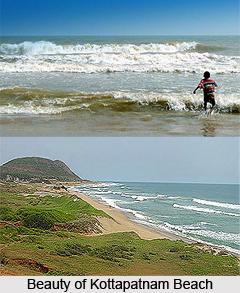 Kottapatnam beach is one of the admiring tourist destinations in the Andhra Pradesh state of India. The beach is named after Kothapatnam village. The beach is famous for its natural beauty. This beach is frequently visited by international tourists mainly because of its untouched beauty. Also, during Karthika Powrnami, thousands of people visit the beach to take a holy dip.
Kottapatnam beach is one of the admiring tourist destinations in the Andhra Pradesh state of India. The beach is named after Kothapatnam village. The beach is famous for its natural beauty. This beach is frequently visited by international tourists mainly because of its untouched beauty. Also, during Karthika Powrnami, thousands of people visit the beach to take a holy dip.
Attractions of Kottapatnam Beach
The clean and picturesque Kottapatnam beach serves as a popular recreational spot for the local village people as well as tourists. Kottapatnam beach is the closest beach to the town of Ongole. It is located about 18 km away from Ongole of Andhra Pradesh. Ongole is a coastal town in the Prakasam district of Andhra Pradesh. The town has a very ancient historical background. It can be traced back to the era of the Mauryas and the Satavahanas. During the reign of the Kakatiya Dynasty, Ongole too was in the limelight.
Tourists can easily visit the Kottapatnam beach even while spending a beach holiday in Andhra Pradesh. The rocky beach dotted with greenery is alluring to the tourists. Away from the hustle bustle and reach of modern lifestyle, the beach takes its visitors back in time. The tourists can even trace the Mauryan influence, in the various items preserved in some of the nearby villages. Tourists can also get a glimpse of the lifestyle of the people in coastal villages of Andhra Pradesh. One can relax in the sea shore watching the local fisherman busy with there jobs. The fishes from the sea are sold in the market. Cooked sea fishes are also sold in the sea side food stalls. Thus, spending few hours in the Kottapatnam beach will become certainly memorable.
Connectivity to Kottapatnam Beach
The best time to explore Kottapatnam beach is from November to February. Kothapatnam beach can be accessed through air, bus as well as train. The nearest major city to kothapatnam beach is Hyderabad and Tirupathi which is at a distance of 300 km`s. Kothapatnam beach is also well connected by buses and taxis which are run by the state government at affordable rates. And the closest railway junction is at Tenali.



















